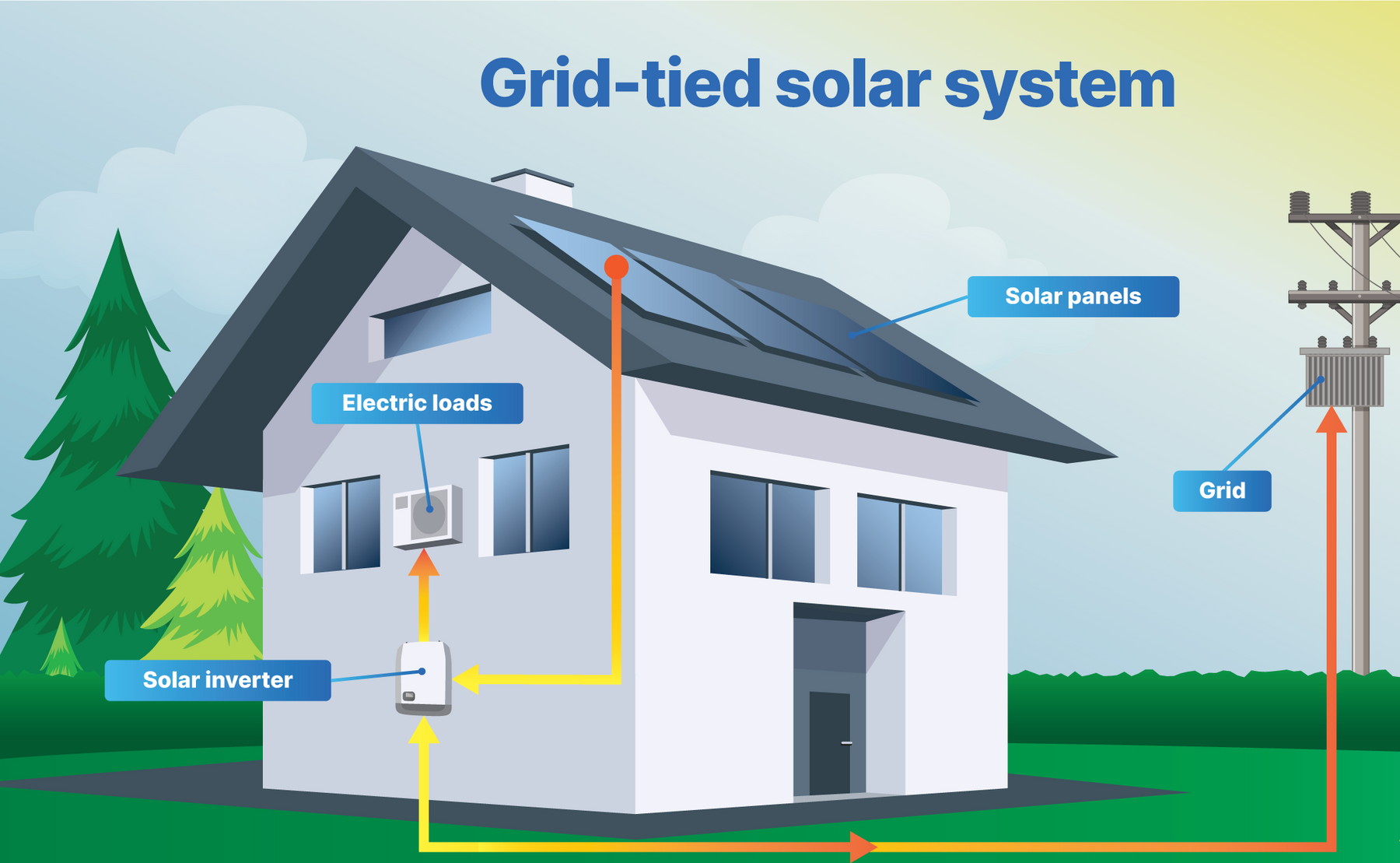
What Is a Grid Tie Inverter? See Why Experts Recommend It
Setting up a solar system tied to the grid? You’ll need a grid tie inverter—it’s the brain of the operation.
This device converts solar power into usable energy and sends excess back to the grid. In this guide, we’ll explain how it works, why it matters, and how it helps you save big on energy bills.
What is a grid-tie inverter?
A grid-tie inverter connects your solar system to the electricity grid, allowing you to use solar power while sending excess energy back to the grid, often earning credits or money.
Key Takeaways
-
A grid-tie inverter converts direct current (DC) power from solar panels into alternating current (AC) power that can be used in your home or fed into the grid.
-
Grid-tie inverters help maintain the balance between energy consumption and energy production, making them a crucial component in solar energy systems.
-
These inverters allow homeowners and businesses to reduce their electricity costs by using the energy generated by their solar panels, with excess energy being sold back to the grid.
What Is a Grid-Tie Inverter?

A grid-tie inverter, also known as a grid-connected inverter, is a device that allows your solar energy system to work in tandem with the electrical grid.
Essentially, it is the bridge between the solar panels, the electrical grid, and your home’s electrical system.
The inverter’s primary job is to convert the DC (direct current) electricity generated by your solar panels into AC (alternating current) electricity, which is the standard form of electricity used in homes and businesses.
Unlike off-grid inverters, which are designed to store excess energy in batteries, a grid-tie inverter feeds the surplus energy back into the public electrical grid.
This means that when your solar panels generate more energy than you need, the excess power is sent to the grid, and in return, you may receive credits or payment from your utility company.
How Does a Grid-Tie Inverter Work?
The process of converting solar power into usable electricity involves several steps, and the grid-tie inverter plays a vital role in this process:
Solar Panels Generate DC Power
The process begins when sunlight hits your solar panels, generating DC electricity.
The amount of electricity generated depends on the number of solar panels, the amount of sunlight, and the overall efficiency of your system.
DC Power is Sent to the Inverter
The DC electricity produced by the solar panels is then sent to the grid-tie inverter. The inverter takes this electricity and begins the process of converting it into AC power.
Inverter Converts DC to AC
The grid-tie inverter uses an electronic switching circuit to convert the DC electricity into AC electricity.
This AC power is then ready to be used in your home’s electrical system or sent to the grid.
Power is Used or Sent to the Grid
If your home is using less electricity than the solar system is generating, the inverter will send the excess energy to the grid.
If your home is using more electricity than your solar system is generating, the grid will supply the additional power.
Metering and Utility Interaction
In most cases, a bi-directional meter is installed to track the amount of energy your solar system generates and sends to the grid, as well as the amount of energy you draw from the grid.
This setup ensures that you can be compensated for any surplus energy.
Benefits of a Grid-Tie Inverter

There are several advantages to using a grid-tie inverter in your solar system. Let’s explore some of the key benefits.
Cost Savings
One of the primary benefits of a grid-tie inverter is the ability to reduce electricity costs. By using the energy generated by your solar panels, you can lower your monthly electricity bill.
Additionally, any excess energy sent to the grid may result in compensation through a system called net metering, where you receive credits that can offset future energy costs.
Energy Independence
Although a grid-tie inverter doesn't completely eliminate your reliance on the electrical grid, it does reduce your dependence on it.
With a properly designed system, you can use a significant amount of the energy generated by your solar panels and avoid the costs of buying power from the grid.
Sustainability
Grid-tie inverters help reduce the environmental impact of electricity consumption by promoting the use of renewable energy.
By using solar power, you’re contributing to a cleaner, more sustainable energy future and helping reduce your carbon footprint.
No Need for Batteries
Unlike off-grid systems, grid-tie inverters do not require expensive batteries to store energy. The excess power generated by your solar panels is simply fed back into the grid.
This eliminates the need for additional maintenance and upfront costs associated with battery systems.
Frequently Asked Questions
1. How does a grid-tie inverter work?
A grid-tie inverter converts the DC electricity from solar panels into AC electricity, which can be used in your home or fed into the electrical grid.
2. Do I need a battery with a grid-tie inverter?
No, grid-tie inverters do not require batteries. Excess energy is sent to the grid, and you can draw from the grid when your solar system isn’t generating enough power.
3. Can I use a grid-tie inverter for an off-grid system?
No, grid-tie inverters are designed to work with the electrical grid. For an off-grid system, you would need an off-grid inverter that can store energy in batteries.
Conclusion
A grid-tie inverter is an essential component of a solar power system that helps convert DC power from your solar panels into usable AC power.
It allows you to use renewable energy in your home and even send excess power back to the grid, saving money and promoting environmental sustainability.
When choosing a grid-tie inverter, make sure to consider factors such as size, efficiency, and warranty.
Regular maintenance will ensure that your inverter continues to function efficiently and reliably for years to come.
